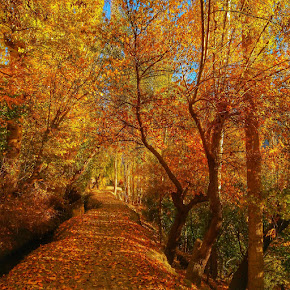Hunza Valley, tucked away in Pakistan's north, is a veritable gold mine of scenic beauty and rich cultural legacy. This charming location offers breathtaking scenery, important historical landmarks, and a diverse range of customs. These are some unusual locations in Hunza that you shouldn't miss if you're planning a vacation there.
The breathtaking scenery of the Hunza valley has led visitors to refer to it as a "paradise on earth." The Hunza valley is one of the most rejuvenating portions of the journey because of the vibrant locals and breathtaking surroundings that exude positive energy everywhere. These days, trekking is also highly popular, so saying that Hunza has a lot of hikes is a huge understatement.Explore the magnificence of the Hunza Valley by visiting its various locations. Every point is magnificent, showcasing both the local culture and the natural beauty of Hunza. Additionally, there are some great trips regarding culture and customs.
Baltit Fort
Hunza's Altit Fort is a magnificent historical landmark, older than its twin Baltit. Restored to its former splendor, this 900-year-old fort today functions as a cultural hub. Shikar Fort, the royal garden of the fort, and the nearby settlement provide an insight into the rich history of the area.
Altit Fort, with its elaborate wood carvings and stone construction, is a magnificent example of traditional Hunza architecture. The Shikar Fort, the fort's royal garden, is a calm area with vibrant flowers and apricot trees that provides guests with a peaceful haven. The historical displays and guided tours inside the fort offer an engrossing look into the region's colorful past while emphasizing the fort's significance to Hunza's political and cultural life. A trip through time to Altit Fort provides a profound understanding of the valley's magnificent architectural design and rich cultural legacy.
Khunjerab Pass
Khunjerab Pass, which links Pakistan and China, is the world's highest paved international border crossing, standing at 4,693 meters above sea level. In addition to providing beautiful vistas, the pass is home to the Khunjerab National Park, where you may be able to see the elusive snow leopard.
At 4,693 meters above sea level, the Khunjerab Pass connects China with Pakistan and is the highest paved international border crossing in the world. Along with being an essential commercial route between the two countries, this amazing pass provides visitors with breathtaking views of the Karakoram Range. The breathtaking scenery opens up as you approach the pass, showcasing snow-capped peaks, enormous glaciers, and lush valleys. Khunjerab National Park, a sanctuary for lovers of wildlife, is also located in this area. The elusive snow leopard and other endangered animals, such the Marco Polo sheep, red fox, and Himalayan ibex, may be spotted here. Khunjerab Pass promises an experience unlike any other, whether you're a romantic or an adventurous visitor.























